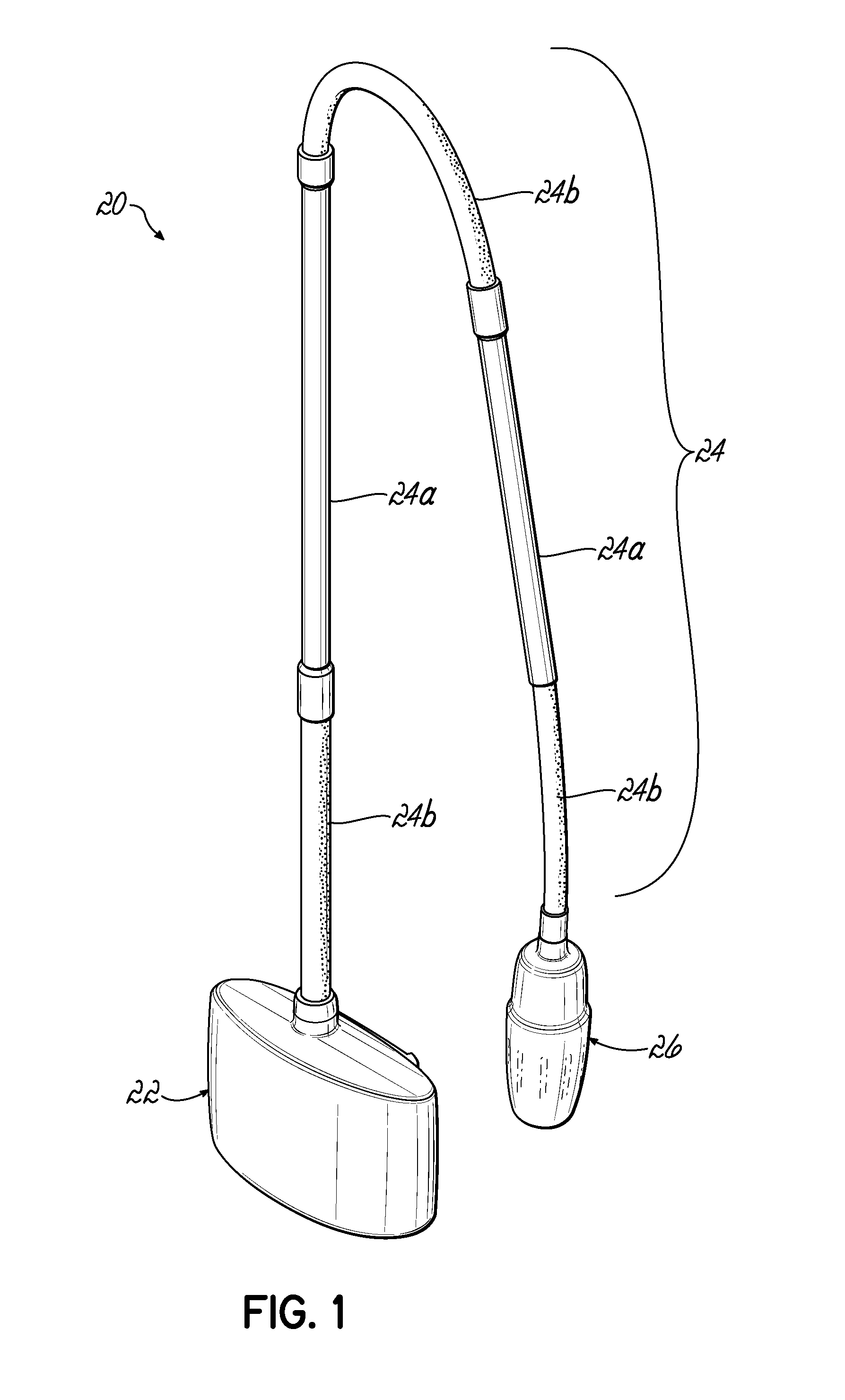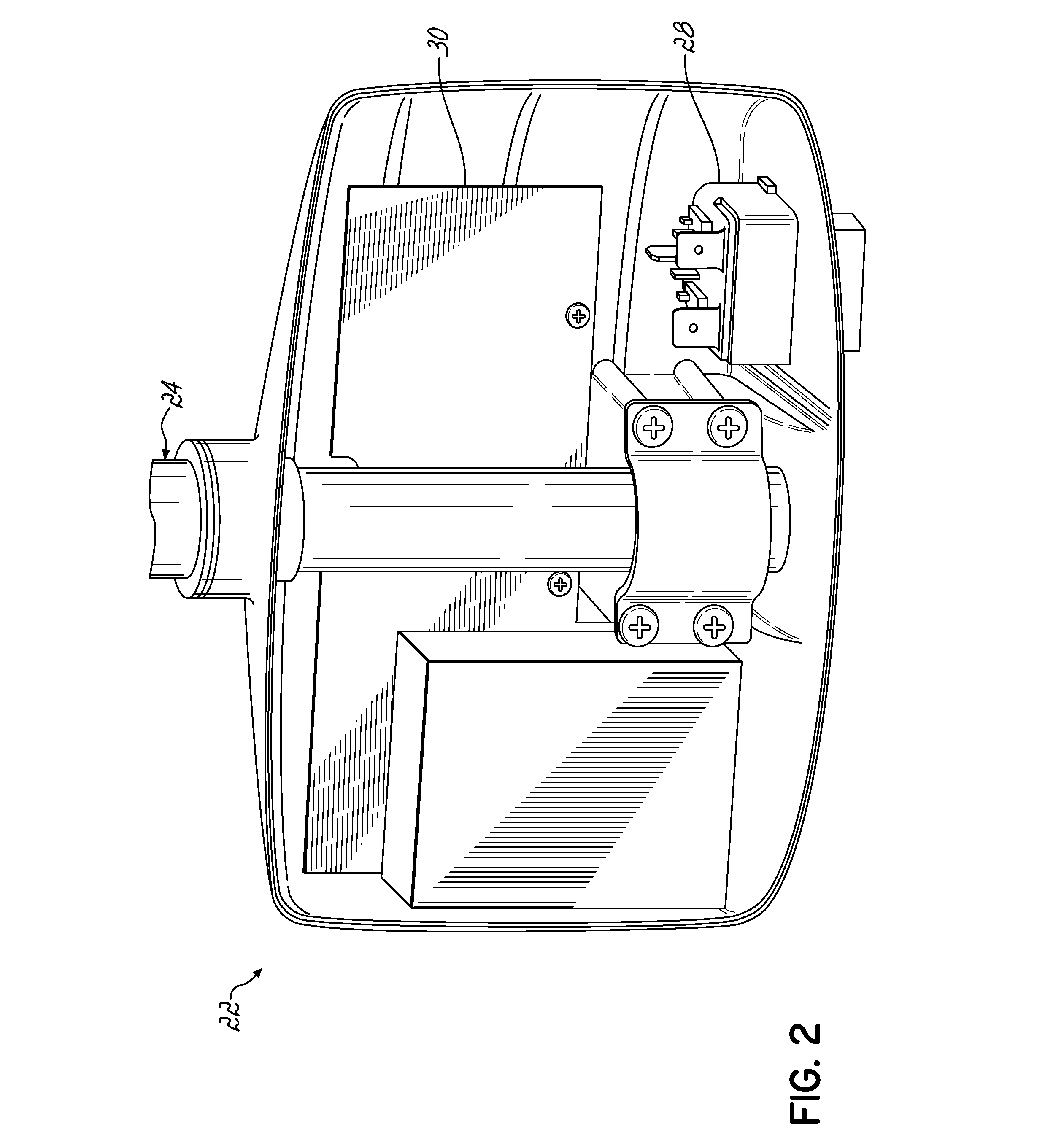LED light for examinations and procedures
a technology of led light and examination, applied in the field of illumination, can solve the problems of limiting the effectiveness of the system, preventing accessibility, cumbersome users, etc., and achieve the effect of reducing floor clutter, maximum accessibility, and convenient location
- Summary
- Abstract
- Description
- Claims
- Application Information
AI Technical Summary
Benefits of technology
Problems solved by technology
Method used
Image
Examples
Embodiment Construction
[0025]Embodiments of the invention provide an examination light that delivers lighting with proper intensity, color temperature and uniformity to assist in enabling a medical provider in providing proper diagnoses. Embodiments allow the light to be used in multiple types of examinations and procedures by providing an adequate reach and positioning to assist in illuminating any part of the body without drifting from its location. Embodiments of the invention also allow for the ability to adjust the spot size from a minimum range to a maximum range assisting the provider in being able to direct light only where needed. Additionally, embodiments of the invention also provide an auto-intensity functionality, driving more light to an increased spot size, assisting in minimizing intensity roll-off.
[0026]Turning now the embodiment of the examination light 20 in FIG. 1, the light 20 includes a base component 22, an arm 24 with both rigid 24a and flexible 24b sections, and a lamp head 26. Th...
PUM
 Login to View More
Login to View More Abstract
Description
Claims
Application Information
 Login to View More
Login to View More - R&D
- Intellectual Property
- Life Sciences
- Materials
- Tech Scout
- Unparalleled Data Quality
- Higher Quality Content
- 60% Fewer Hallucinations
Browse by: Latest US Patents, China's latest patents, Technical Efficacy Thesaurus, Application Domain, Technology Topic, Popular Technical Reports.
© 2025 PatSnap. All rights reserved.Legal|Privacy policy|Modern Slavery Act Transparency Statement|Sitemap|About US| Contact US: help@patsnap.com



